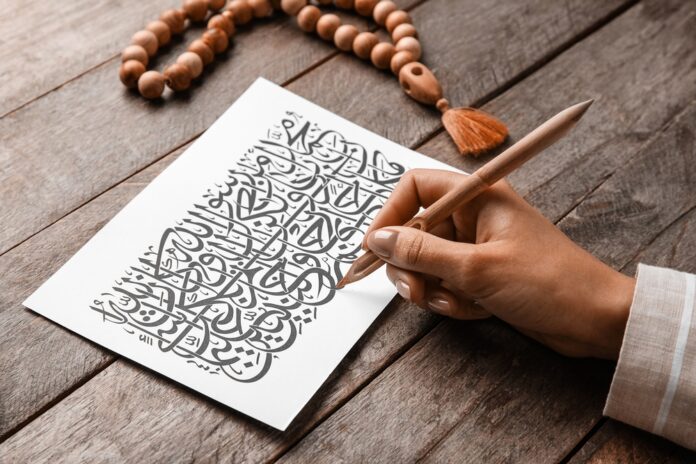Embarking on the journey of calligraphy and hand lettering can be both exciting and rewarding. These timeless art forms allow you to express creativity through beautiful writing, whether it’s for personal enjoyment, creating handmade gifts, or even starting a small business. If you’re a beginner eager to dive into the world of elegant scripts and artistic letters, this guide will provide you with the essential techniques and resources to get started.
Understanding Calligraphy and Hand Lettering
Many people often confuse calligraphy with cursive writing or assume that neat handwriting is a prerequisite. However, calligraphy is more about drawing letters deliberately and artistically rather than just writing them. It’s important to dispel common myths about calligraphy, such as the need for perfect handwriting or prior experience with cursive. Anyone can learn calligraphy with practice and the right approach.
The Difference Between Calligraphy and Hand Lettering
While both involve creating decorative letters, calligraphy typically uses specific tools like dip pens or brush pens to produce strokes with varying thicknesses. Hand lettering, on the other hand, involves drawing or illustrating letters and can include a variety of styles and mediums. Starting with faux calligraphy can be less intimidating for beginners, as it allows you to mimic the look of calligraphy using regular pens.
Essential Tools for Beginners
Choosing the right tools is crucial for your calligraphy journey. While it might be tempting to buy the fanciest supplies, beginners can start with some basic, affordable items.
- Brush Pens: Brands like Tombow and Zebra offer brush pens that are excellent for beginners practicing modern calligraphy.
- Paper: Using smooth, high-quality paper can prevent ink bleeding and fraying of pen tips.
According to a comprehensive guide on learning calligraphy, the Pilot Parallel pen is a favorite for gothic blackletter scripts due to its versatility and ease of use.
Practicing Basic Strokes and Drills
Success in calligraphy comes from continuous practice and mastering the fundamental strokes. By focusing on basic calligraphy strokes and drills, you develop muscle memory, which leads to improved consistency and style. Remember, progress comes with practice, not perfection.
Starting with Monoline Calligraphy
Before diving into more complex scripts, it’s beneficial to start with monoline calligraphy. This style uses consistent stroke widths, allowing you to focus on letterforms without worrying about pressure variations. As you gain confidence, you can move on to styles that incorporate thin upstrokes and thick downstrokes.
Exploring Different Calligraphy Styles
Calligraphy offers a variety of styles, each with its unique aesthetic and technique. Here’s an overview of some popular styles for beginners:
Modern Calligraphy
Modern calligraphy is known for its personal and whimsical approach, allowing for creative freedom. It often features loopy strokes and is less rigid than traditional styles.
Blackletter Calligraphy
Also known as Olde English, blackletter is characterized by its bold, dramatic strokes. Beginners interested in this style can explore resources and practice sheets specifically designed for blackletter scripts.
Copperplate and Spencerian
These are more advanced styles that require attention to detail and consistent pressure control. They produce elegant and ornate letters, perfect for formal invitations and artistic projects.
Overcoming Challenges for Left-Handed Learners
Left-handed individuals may face unique challenges in calligraphy, such as ink smearing and paper angles. However, there are practical solutions and adaptations available. Adjusting the paper position and exploring different pen grips can make the learning process smoother.
Leveraging Resources and Communities
There are numerous resources available to help you learn calligraphy, from online tutorials to in-depth courses.
- Online Courses: Platforms like The Postman’s Knock offer beginner-friendly online courses in modern calligraphy.
- Practice Worksheets: Many websites provide free downloadable practice sheets to help you perfect your strokes.
- Community Support: Joining a supportive community, such as a Facebook group or forum, allows you to share your progress and receive feedback from fellow enthusiasts.
Recommended Reading and Further Learning
To deepen your understanding and refine your skills, consider exploring books and publications by experienced calligraphers. For instance, Laura Toffaletti, an artist with an extensive background in illustration and calligraphy, combines her talents to create inspiring works. She has also authored a book released by White Star Publishers, which holds rankings in several categories and is well-received by readers. You can find more about her work and explore related calligraphy guides.
Embrace Your Calligraphy Journey
Starting calligraphy is not about achieving perfection from the outset but about enjoying the process of learning and creating. Remember that every expert was once a beginner. With dedication and the right resources, you can develop your unique style and perhaps even share your art with the world. So pick up that pen, and let your creativity flow.
Note: This article incorporates insights from various resources to provide comprehensive guidance for beginners in calligraphy and hand lettering.


